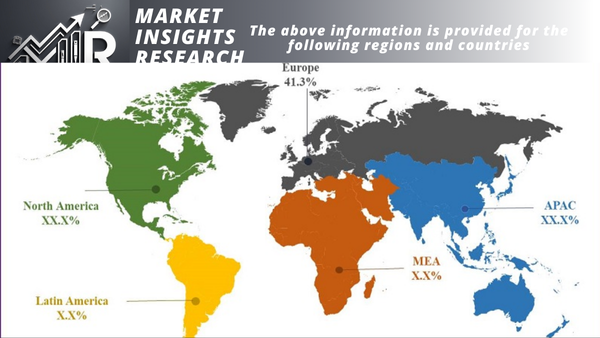Smart Battery Charger Market
Smart Battery Charger Market - Global Industry Size, Share, Trends, Opportunity, and Forecast, Segmented By Charger Type (Wired Chargers, Wireless Chargers), By Application (Smartphones, Laptops, Electric Vehicles (EVs), Other), By Features (Basic Smart Chargers, Advanced Smart Chargers), By Distribution Channel (OEM, Aftermarket) By Region & Competition, 2019-2029
Published Date: May - 2025 | Publisher: MIR | No of Pages: 320 | Industry: Power | Format: Report available in PDF / Excel Format
View Details Buy Now 2890 Download Free Sample Ask for Discount Request Customization| Forecast Period | 2025-2029 |
| Market Size (2023) | USD 3.67 Billion |
| Market Size (2029) | USD 5.32 Billion |
| CAGR (2024-2029) | 6.22% |
| Fastest Growing Segment | Aftermarket |
| Largest Market | North America |

Market Overview
Global Smart Battery Charger Market was worth USD 3.67 billion in 2023 and is expected to forecast exciting growth during the forecast period with a CAGR of 6.22% during 2023-2029.
The Smart Battery Charger industry includes the business involved in sophisticated battery charging solutions employing intelligent technology to offer efficient, safe, and high-performance charging. These chargers are made to change charging parameters dynamically according to the particular requirements of the battery they charge, usually employing microcontrollers or software algorithms in order to optimize the charging. With this technology, overcharging is prevented, the battery life is prolonged, and maximum power delivery is maintained, and it responds to different battery chemistries like lithium-ion, lead-acid, and nickel-metal hydride.
The market consists of diverse applications in consumer electronics, automotive, industrial equipment, and renewable energy systems. Smart battery chargers are being used more and more in electric vehicles (EVs), portable equipment, and energy storage devices as they can address complex charging needs and enhance overall energy efficiency. The expanding market is fueled by increased demand for efficient energy storage technology, advances in technology, and the surge in interconnected devices. In addition, growing awareness among consumers about energy efficiency and sustainability further drives the use of smart charging technologies.
Major Market Drivers
Technological Advancements
Technological innovations are the key growth driver of the Smart Battery Charger market worldwide. Electronics and software advances have paved the way for sophisticated charging technologies that deliver improved efficiency and usability. Contemporary smart battery chargers utilize microcontrollers, complex algorithms, and real-time processing of data to maximize charging cycles. These technologies enable chargers to automatically tune voltage, current, and temperature as inputs depending on the type and state of the battery.
A major breakthrough is the use of adaptive charging algorithms, which modify the charging rate based on the battery state of charge, health, and temperature. Overcharging and overheating are avoided, extending the lifespan of the battery and enhancing safety. Another major development is the inclusion of communication protocols such as Bluetooth, Wi-Fi, and USB, allowing remote monitoring and control via mobile applications. These enable users to receive real-time feedback and diagnostics, adding convenience and ensuring proper battery care.
Advances in chemistries of batteries, including lithium-ion and solid-state batteries, have affected the design of smart chargers. Chargers are required to accommodate the new battery types' distinctive features, creating additional innovation in charging technology. Development of charging standards and regulatory demands also demands increasingly sophisticated and versatile smart chargers.
The ongoing development of technology, as well as the increasing need for high-performance and efficient charging systems, is driving the growth of the smart battery charger market. With each new technology and increased consumer demand, the smart battery charger market should continue to expand through ongoing innovation and development.
Increasing Use of Electric Vehicles (EVs)
The increasing use of electric vehicles (EVs) is one of the key drivers of the global Smart Battery Charger market. With the automobile industry shifting towards electrification, there is a greater demand for efficient and trustworthy charging solutions specifically designed for the demands of EVs. Smart battery chargers play a crucial part in this transition, providing sophisticated features that cater to the specific charging demands of electric vehicles.
Electric cars call for dedicated charging equipment that can manage high power levels and interface with the vehicle's battery management system to ensure safe and efficient charging. Smart battery chargers are made to serve these purposes, with features like adjustable charging rates, over-the-air updates, and real-time monitoring. These functions assist in handling the intricate charging processes surrounding EV batteries to enhance the overall user experience and provide optimal battery performance.
The increase in EV infrastructure, such as public charging points and residential charging stations, also increases the demand for smart battery chargers. With an increased number of consumers using EVs, there is higher demand for efficient and convenient charging solutions. Government incentives and policies encouraging the use of electric vehicles and renewable energy are also responsible for the expansion of the smart battery charger market.
The combination of smart chargers with EV charging networks is also a key to market growth. Networked smart chargers allow for load balancing, energy management, and demand response, improving the efficiency of the charging infrastructure and facilitating the integration of renewable energy.

Download Free Sample Ask for Discount Request Customization
Growing Demand for Consumer Electronics
The growing demand for consumer electronics is the major growth driver of the Smart Battery Charger market worldwide. With technology evolving every day, there is a greater dependence on portable electronic products like smartphones, tablets, laptops, and wearable devices. These need to be charged with efficient and high-performance charging methods to sustain their performance and usability, and therefore there is an urge for smart battery chargers.
Smart battery chargers possess numerous benefits over standard chargers, such as increased charging speeds, advanced safety features, and greater compatibility with different battery types. For example, adaptive charging technology enables smart chargers to modify the rate of charge in accordance with the capacity of the device's battery as well as the existing charge level, optimizing charging time and prolonging battery lifespan.
The growth of consumer electronics, combined with the complexity of these devices, creates a demand for high-end charging solutions. Today's devices usually include batteries with particular charging needs, and smart chargers are made to fulfill such requirements through the provision of well-controlled charging. Moreover, features like over-current protection, temperature sensing, and communication interfaces boost the safety and efficiency levels of the charging process.
Expansion in the consumer electronics market, fueled by advances in technology and evolving consumer needs, has a direct correlation with the demand for smart battery chargers. With new products featuring greater energy requirements and more sophisticated capabilities appearing in the marketplace, the demand for high-level charging solutions is naturally increasing. This trend should continue as technology advances and consumer electronics become more and more embedded in everyday life, fostering continued growth in the smart battery charger market.
Key Market Challenges
High Cost of Advanced Technology
One of the major issues for the international Smart Battery Charger market is the premium cost of advanced technology. Smart battery chargers have advanced functions that include adaptive charging algorithms, real-time monitoring, and communication interfaces, which increase their cost over conventional chargers. The use of microcontrollers, innovative sensors, and software-based functionality involves significant investment in research and development, manufacturing processes, and quality assurance.
Smart battery chargers require advanced components and technologies in production, which increase the cost of production. An example includes the combination of several communication protocols (e.g., Bluetooth, Wi-Fi, and USB) and high-end safety features, which contribute to the production costs of the charger. The requirement for compatibility with many battery chemistries and standards also makes the design challenging and increases production costs. These elements all play a role in the increased retail cost of smart battery chargers.
The increased price tag of smart battery chargers may be an entry deterrent, especially in cost-conscious markets. Businesses and consumers might be hesitant to spend on sophisticated charging solutions if the perceived value is not sufficient to support the extra cost. This might cap market growth and retard the uptake of smart charging technology, especially in areas of lower purchasing power or where cost is a significant factor.
The exorbitant price of state-of-the-art technology has the potential to affect the competitiveness of businesses in the smart battery charger industry. Companies must find an equilibrium between innovation and affordability in order to expand their customer base while upholding profit margins. Overcoming this challenge demands ongoing endeavors in technological innovation, cost-cutting measures, and effective manufacturing processes in order to offset the effect of high manufacturing costs.
Compatibility and Standardization Issues
Compatibility and standardization concerns are a major issue in the international Smart Battery Charger market. Because smart battery chargers are programmed to support a vast array of battery types, chemistries, and applications, it can be challenging to ensure compatibility between different devices and systems. This is further exacerbated by the fast rate of technology development and the advent of new battery technologies.
The variation of battery chemistries, including lithium-ion, nickel-metal hydride, and lead-acid, means that chargers must be flexible and able to support different charging protocols and voltages. All battery types have specific charging requirements and safety concerns, so manufacturers find it difficult to create universal chargers that satisfy all these aspects efficiently. Also, the advent of new battery technologies and standards adds to the complexity of keeping up with compatibility.
Standardization is also a very important matter in the smart battery charger industry. It can create discrepancies in charger design, functionality, and performance due to the absence of uniform industry standards. Standardized protocols are not present; hence, manufacturers might not be able to ensure the compatibility of their chargers with a plethora of devices and batteries. This can lead to incompatibility problems, reduced consumer confidence, and lower market acceptance.
Lack of common standards also impacts interoperability between devices and chargers, especially where regulatory requirements vary across locations. For instance, various countries or geographic regions might have their respective charging standards and safety measures, making it difficult for manufacturers to produce products that meet all the regional requirements while being affordable.
Compatibility and standardization issues are addressed through cooperation among industry players, such as manufacturers, regulators, and standardization bodies. Establishing and implementing industry standards can ensure uniform performance, promote consumer confidence, and encourage market growth for the smart battery charger market. Until comprehensive standards become established across the market, compatibility issues will affect the market and risk inhibiting the adoption and evolution of smart charging technologies.

Download Free Sample Ask for Discount Request Customization
Key Market Trends
Integration with Smart Home Systems
One of the key trends in the worldwide Smart Battery Charger market is the integration of smart battery chargers with smart home systems. With the ongoing development of smart home technology, there is an increased need for devices that integrate perfectly and communicate with home automation ecosystems effortlessly. Smart battery chargers are now being developed to be compatible with platforms such as Amazon Alexa, Google Assistant, and Apple HomeKit, enabling users to monitor and control their chargers via voice commands and mobile apps.
This integration offers a number of advantages. For one, users can remotely initiate or cancel the charging operation, get charging status notifications, and even specify when the charging should take place. This level of control creates greater convenience for users and allows devices to always be charged as the user prefers. In addition, integration with home automation systems includes energy management features like scheduling charging during off-peak electricity times in order to capitalize on reduced rates.
The push towards smart home integration is fueled by the widespread adoption of home automation technologies and the trend of increased focus on connected devices. With more homes integrating smart home systems, the demand for integrated and compatible smart battery chargers is anticipated to increase. The trend also fits with the general movement toward developing more integrated and automated home systems, where devices collaborate to enhance efficiency and convenience.
Focus on Energy Efficiency
Energy efficiency is a strong focus area in the global Smart Battery Charger market. With heightened interest in energy usage and environmental conservation, there is a keen focus on creating charging systems that waste less energy and optimize overall efficiency. Smart battery chargers are designed with innovative features that enable better energy efficiency and lower environmental footprints.
One of the major features of this trend is the use of adaptive charging algorithms. These algorithms dynamically adjust the charging rate in line with the state of charge of the battery and other variables, optimizing the charging process to minimize energy consumption. In addition, smart chargers may also include power factor correction and energy monitoring functions in order to ensure that energy is utilized more efficiently and to inform users about how they are using energy.
The emphasis on energy efficiency is motivated by regulatory imperatives as well as consumer sentiment. Governments and regulatory agencies are now imposing standards and guidelines to favor energy-efficient technologies, nudging manufacturers to create products that meet these specifications. Consumers are also becoming more environmentally aware and are looking for products that meet their sustainability objectives.
The shift towards energy-efficient smart battery chargers also aids the larger-scale use of renewable energy sources. By combining smart chargers with renewable energy systems, including solar panels, users can power their devices with clean energy, further lowering their dependence on fossil fuels and towards a greener future.
Segmental Insights
Charger Type Insights
The Wired Chargers segment was the largest Market share in 2023. Wired chargers provide superior efficiency and higher charging speeds than wireless chargers. The direct wire connection between the charger and the device provides a better and higher power transfer rate, which minimizes the charging time and ensures more dependable performance. This is critical for usages involving quick recharging or high power delivery, such as in consumer devices and the automotive market.
Wired chargers have wider compatibility with a multitude of devices and battery chemistries. Established practices and extensive use of wired charging interfaces, including USB, DC connectors, and proprietary connectors, account for their widespread adoption. Wired charging technology has been refined by manufacturers over time to suit varied requirements and ensure reliability for different applications.
Wired chargers are also less expensive to produce than wireless chargers. Wired charging has simpler technology and is cheaper to manufacture, so that means lower prices on store shelves. This makes wired chargers more easily affordable to a wider audience and helps them be so prevalent in the market.
Wired chargers enjoy the advantage of an established infrastructure. Most devices, current and future, are designed to have wired charging integrated within them, providing an uninterrupted user experience without the necessity for a separate adapter or an alteration.
Although wireless chargers are increasingly popular with their convenience and developing technology, the market dominance of wired chargers is supported by their efficiency, compatibility, affordability, and existing infrastructure. With developing technology and further improvement of wireless solutions, the equilibrium between wired and wireless charging may shift, but wired chargers now have a commanding market share with these long-lasting advantages.
Regional Insights
North America region accounted for the biggest market share in 2023. North America, and especially the United States, is a technological leader and adopter. The region's strong technology sector fuels the need for cutting-edge smart battery chargers. Being home to a dense network of technology firms and research centers, North America is among the leaders in terms of researching and adopting new charging technologies, such as smart and wireless charging.
The intense penetration of consumer electronics in North America drives the demand for smart battery chargers. Consumers here like to constantly change their devices and want high-performance chargers with faster charging times, enhanced safety features, and greater convenience. This relentless demand for the latest technology drives the growth of the smart battery charger market.
North America has witnessed rapid electric vehicle adoption, especially in the United States and Canada. The encouragement of government incentives, regulatory support, and growing consumer demand for EVs fuels the demand for sophisticated EV charging solutions such as smart chargers. The creation of widespread EV charging infrastructure further fuels this market segment.
The comparatively high consumer disposable income and spending capacity in North America provide the ability to spend more on premium and advanced charging systems. This economic capability provides the consumer with the ability to spend on smart battery chargers with improved features and performance.
North America has an established infrastructure for the production and distribution of smart battery chargers in terms of a network of manufacturers, distributors, and retailers that enable extensive distribution of such products.

Download Free Sample Ask for Discount Request Customization
Recent Developments
- In August 2023, CATL introduced Shenxing, the world’s first 4C superfast charging LFP battery. This breakthrough technology enables a 400 km driving range with just a 10-minute charge and offers over 700 km on a full charge. Shenxing is poised to significantly reduce fast charging anxiety for electric vehicle (EV) users, marking a pivotal advancement in EV charging technology. With ongoing advancements in battery technology, the industry has achieved extended driving ranges for EVs. Fast charging anxiety, a significant barrier to EV adoption, has been a key challenge. CATL’s innovative approach, focusing on electrochemistry and advancements in materials, electrochemistry, and system design, has led to notable improvements in charging speed, energy density, and safety. Shenxing represents a leap forward by pushing the performance limits of LFP chemistry and setting new standards in battery innovation.
- In April 2024, CATL has introduced a new battery pack in collaboration with Yutong Bus Co. to power commercial vehicles, including buses and trucks. Yutong, a leading Chinese bus manufacturer, will deploy these advanced battery packs in their upcoming electric vehicles. The new EV battery pack, developed in partnership with CATL, boasts zero degradation after the first 1,000 charging cycles. This battery pack comes with an impressive warranty of 932,000 miles (1.5 million kilometers) and 15 years, marking it as a pioneering product in the industry. Yutong has unveiled another battery option with a 10-year lifespan and 621,000 miles (1 million kilometers).
- In November 2023, DESTEN has unveiled the Ultra-Fast Charging 6C LFP (Lithium Iron Phosphate) cell, a breakthrough in battery technology. This latest pouch-form cell can charge from 20% to 80% state of charge (SOC) in just 6 minutes. Leveraging its LFP-based chemistry, the cell offers exceptional chemical and temperature stability, positioning it as the safest battery technology available at the time. It delivers market-leading cost efficiency, further enhancing its appeal in the industry.
Key Market Players
- Schneider Electric SE
- ABB Limited
- Delta Electronics, Inc.
- Apple Inc.
- Samsung Electronics Co., Ltd.
- LG Electronics Inc.
- Panasonic Corporation
- Sony Corporation
- Robert Bosch GmbH
- Phinia Inc
|
By Charger Type |
By Application |
By Features |
By Distribution Channel |
By Region |
|
|
|
|
|
Related Reports
- Europe Residential Boiler Market Size - By Technology (Condensing {Natural Gas, Oil, Electric}, Non-Condensing {Natural ...
- U.S. Boiler Market Size By Fuel (Natural Gas, Oil, Coal), Capacity, By Technology (Condensing, Non-Condensing), By Produ...
- Commercial Hot Water Boiler Market Size - By Fuel (Natural Gas, Oil, Coal, Electric), By Technology (Condensing, Non-Con...
- UK Commercial Boiler Market Size By Fuel (Natural Gas, Oil, Coal, Electric), By Capacity, By Technology (Condensing, Non...
- Residential Electric Boiler Market Size - By Voltage Rating (Low Voltage, Medium Voltage), Industry Analysis Report, Reg...
- Europe Steam Boiler Market - By Capacity, By Fuel (Natural Gas, Oil, Coal), By Technology (Condensing, Non-Condensing), ...
Table of Content
Executive Summary
-
-
1.1 Market Overview
-
1.2 Key Trends and Insights
-
1.3 Strategic Recommendations
-
-
Introduction
-
2.1 Objectives of the Report
-
2.2 Scope and Coverage
-
2.3 Research Methodology
-
2.4 Data Sources and Assumptions
-
-
Market Overview
-
3.1 Definition and Features of Smart Battery Chargers
-
3.2 Evolution of Charging Technology
-
3.3 Industry Ecosystem and Value Chain
-
-
Market Dynamics
-
4.1 Market Drivers
-
4.1.1 Rise in Portable Electronics and E-mobility
-
4.1.2 Demand for Efficient and Safe Charging Solutions
-
-
4.2 Market Restraints
-
4.2.1 Compatibility and Cost Barriers
-
-
4.3 Market Opportunities
-
4.3.1 IoT and Smart Grid Integration
-
-
4.4 Market Challenges
-
4.5 Porter’s Five Forces Analysis
-
-
Technology Landscape
-
5.1 Smart Charging Modes and Algorithms
-
5.2 Wireless and Fast-Charging Innovations
-
5.3 Safety and Battery Health Monitoring Features
-
5.4 Integration with Mobile Apps and IoT Platforms
-
-
Market Segmentation
-
6.1 By Battery Type
-
6.1.1 Lithium-ion
-
6.1.2 Lead-acid
-
6.1.3 NiMH
-
6.1.4 Others
-
-
6.2 By Charger Type
-
6.2.1 Wired Smart Chargers
-
6.2.2 Wireless Smart Chargers
-
-
6.3 By Application
-
6.3.1 Consumer Electronics
-
6.3.2 Electric Vehicles
-
6.3.3 Industrial Equipment
-
6.3.4 Energy Storage Systems
-
6.3.5 Others
-
-
-
Regional Market Analysis
-
7.1 North America
-
7.2 Europe
-
7.3 Asia-Pacific
-
7.4 Latin America
-
7.5 Middle East & Africa
-
-
Market Size and Forecast (2020–2030)
-
8.1 Revenue Analysis by Segment
-
8.2 Volume Analysis by Region
-
8.3 CAGR and Growth Opportunities
-
-
Competitive Landscape
-
9.1 Market Share of Leading Players
-
9.2 Company Profiles
-
9.2.1 Product Offerings
-
9.2.2 Technological Capabilities
-
9.2.3 Strategic Developments
-
-
-
Regulatory and Standards Framework
-
10.1 Safety Standards and Certifications
-
10.2 Environmental Compliance Regulations
-
-
Consumer and Industry Trends
-
11.1 Charging Preferences and User Behavior
-
11.2 Demand Trends by Industry
-
-
Future Outlook and Strategic Recommendations
-
Appendices
-
13.1 Glossary of Terms
-
13.2 Research Methodology Summary
-
13.3 Bibliography
-
To get a detailed Table of content/ Table of Figures/ Methodology Please contact our sales person at ( chris@marketinsightsresearch.com )
FAQ'S
For a single, multi and corporate client license, the report will be available in PDF format. Sample report would be given you in excel format. For more questions please contact:
Within 24 to 48 hrs.
You can contact Sales team (sales@marketinsightsresearch.com) and they will direct you on email
You can order a report by selecting payment methods, which is bank wire or online payment through any Debit/Credit card, Razor pay or PayPal.
Discounts are available.
Hard Copy
